In a building designed by Daniel Libeskind in Osnabrück, you can see an impressive collection of paintings by the Jewish painter Felix Nussbaum. An architectural and artistic visit to the Felix Nussbaum House not to be missed.
Who was Felix Nussbaum?
Felix Nussbaum is one of the best-known painters of the New Objectivity. He was born in Osnabrück in 1904 as the son of a respected Jewish ironmonger. Art and music were part of the family’s life. His father was an amateur painter and encouraged his son Felix’s artistic interests.
His first works were family portraits, self-portraits, views of cities and landscapes. At the age of 21, for example, Felix Nussbaum painted the painting “The Two Jews”, thus visually professing his faith.
In 1922 he began studying art in Hamburg, but moved relatively quickly to the art metropolis of Berlin. His first works were still very much inspired by the styles of well-known artists of his time. Over time, however, his own artistic style crystallised more and more. This often showed humorous elements, but also melancholy and sadness. In 1932, there was a fire in his studio that destroyed a large part of his early works.

With the increasing persecution of Jews in Germany, Felix Nussbaum no longer felt safe in the country and fled in 1933. From 1940 he hid in Brussels with his wife Felka Platek. During this time, he created paintings that artistically dealt with the themes of isolation and personal fears, such as persecution and deportation.
Someone betrayed Nussbaum’s last hiding place and he was deported to Auschwitz in one of the last transports. Nussbaum died in 1944 after a little over a month in the Auschwitz-Birkenau concentration camp.
A museum for Felix Nussbaum is being built
In the Museumsquartier Osnabrück there is a museum building that was created especially for Nussbaum’s works.
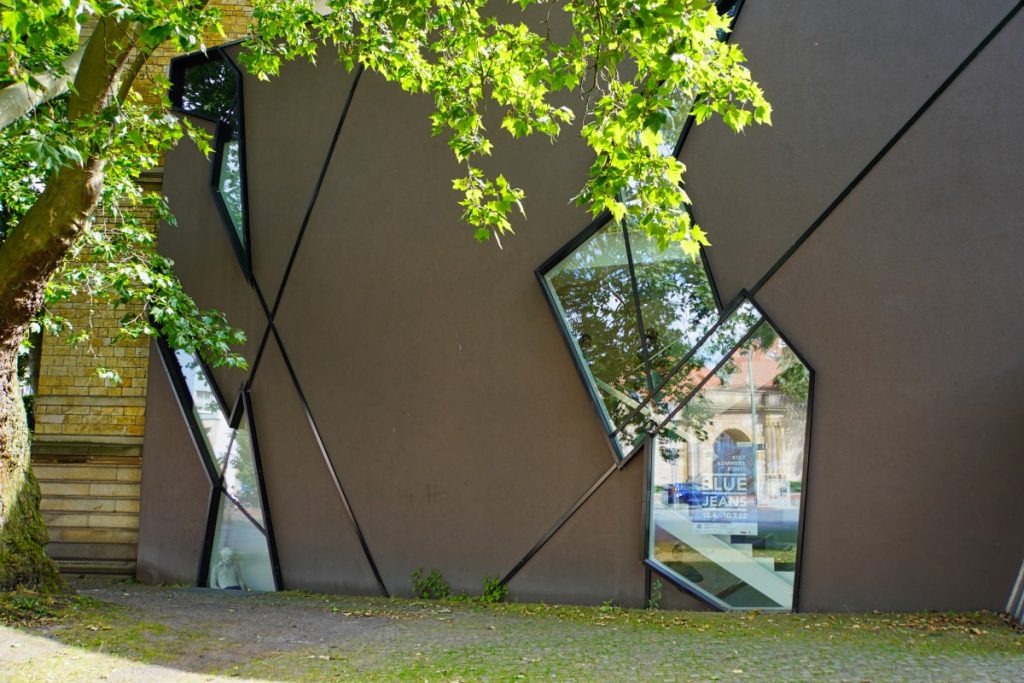
The new building was put out to tender in an international competition in 1994. 295 architects took part, and Daniel Libeskind was the winner.
The well-known American-Jewish architect built a distinctive building to the existing buildings of the museum complex that connects the individual areas. The museum was opened in July 1998.

When I walked through the Felix Nussbaum House, I was immediately struck by the similarity to the Jewish Museum in Berlin, which was also designed by Libeskind. This is said to be due to the quite similar tasks of the two competitions.
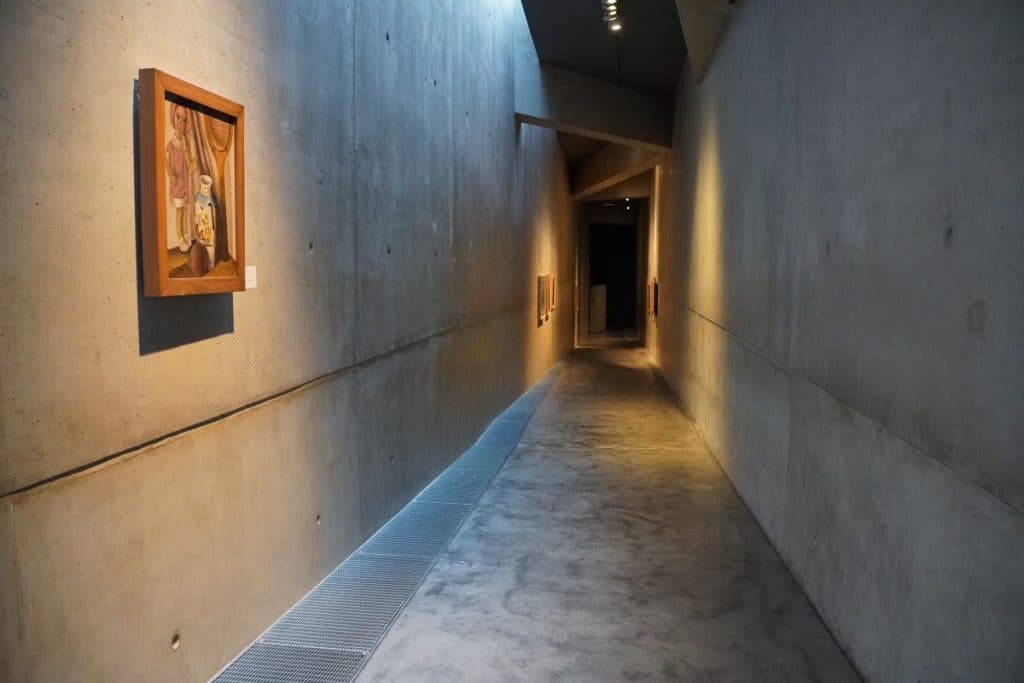
In Osnabrück, a complex of three overlapping buildings has been created with a connecting link between old parts of the building and the new construction. It is striking that there are no right angles anywhere in the building. Corners end in points and rooms have the most unusual shapes. Many walls are made of unplastered concrete with long narrow window bands that let light from outside into the building. As in the Berlin Jewish Museum, long narrow and ascending corridors lead through the building and also as in the museum in Berlin I find these corridors oppressive. For example, there is an empty corridor called the “corridor of unpainted pictures”.

A special feature can be found outside the museum. During the construction work, a stone bridge (Ravelin Bridge) from 1672 was discovered in the garden of the museum complex. Fortunately, they wanted to and were able to preserve it without making major changes to the plans. I really like the contrast between the old and new architecture.

Felix-Nussbaum-Haus in Osnabrück
The Felix Nussbaum House in Osnabrück houses the world’s largest collection of his paintings. Some of the works can be seen in a permanent exhibition on the artist.
Nussbaum managed to save many of his works by giving them to a Belgian doctor. He is said to have asked him to exhibit his works with the sentence “If I go down – don’t let my paintings die”. In 1969, the doctor handed the paintings over to a cousin of the painter, who then took them back to the painter’s birthplace. Unfortunately, many paintings were badly damaged and had to be restored over the following years.

In 1971, the first pictures could be viewed in an exhibition in today’s Kunsthalle Dominikanerkirche, and many more exhibitions followed. Through donations, purchases and endowments, it was possible to gradually expand the collection.
If you walk through the exhibition in the Felix Nussbaum House, you will recognise his experiences in life through the depictions in Felix Nussbaum’s paintings. They reflect, for example, his experiences as a Jew in National Socialist Germany and, from today’s perspective, one can almost claim that he has created an artistic chronicle.

If you look at the pictures that were created after 1940, you will repeatedly recognise motifs that deal with his experiences in a French camp. After his successful escape, he dealt with themes such as the proximity of death due to illness, fears and the threat to his existence posed by the new legislation.
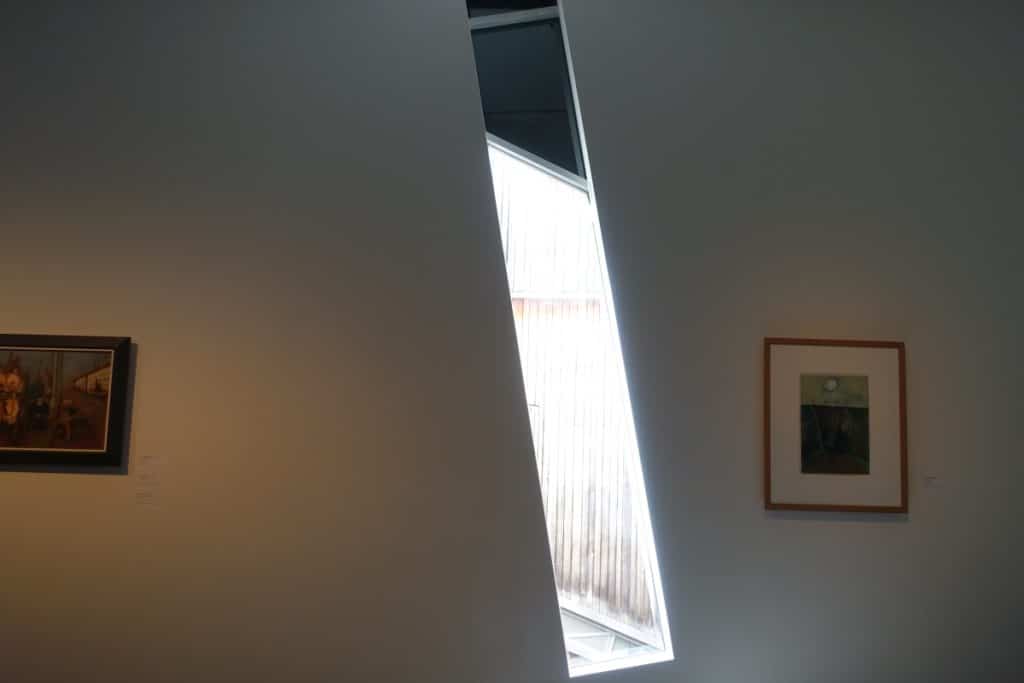
I was very impressed by some of the pictures in the exhibition. The powerful and yet often vulnerable expression shows so much suffering, but also resistance. You can really feel the turmoil in some of them.
Address:
Museumsquartier Osnabrück
Lotter Straße 2
49078 Osnabrück
Opening hours:
Tuesday to Friday:
11-18 h
Saturday and Sunday:
10-18 h
Closed:
Mondays, Good Friday, 1 May, Christmas Eve, Christmas Day, New Year’s Eve, New Year’s Day
additionally open:
Easter Sunday, Easter Monday, Ascension Day, Whit Sunday, Whit Monday, German Unity Day, Reformation Day, Boxing Day and other public holidays:
10 -18h.
Admission fees:
Adults: 5,-€
Discounts are offered.
The visit to the Felix Nussbaum House took place as part of an Instawalk with Osnabrücker Land and About Cities .





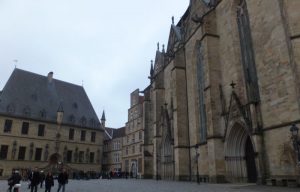
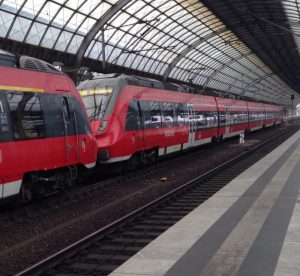

Leave a Reply